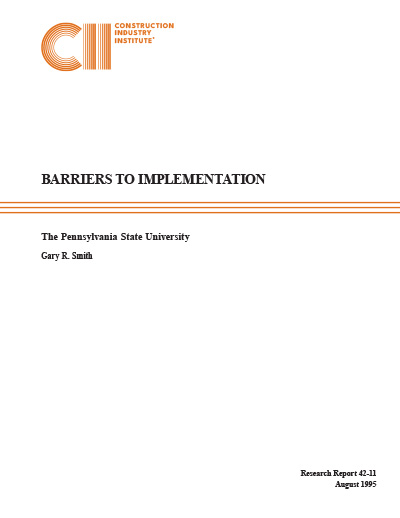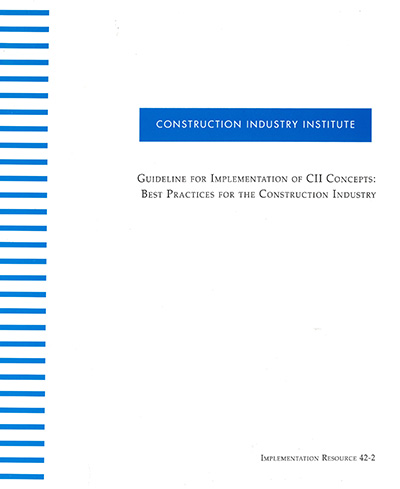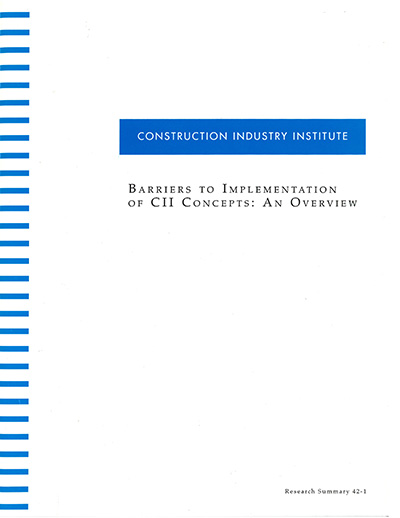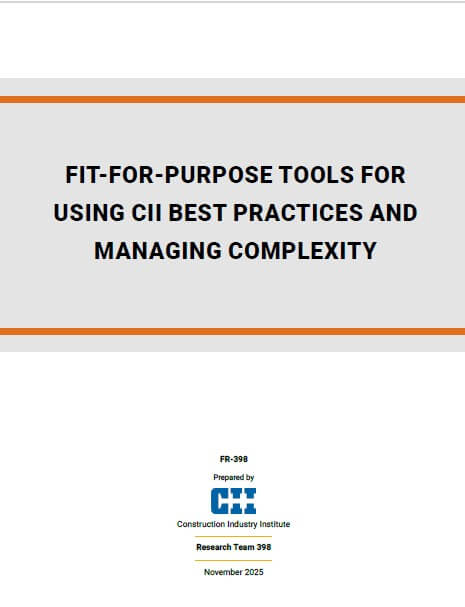
Barriers to Implementation
The original focus of CII’s research was to increase the cost effectiveness of our domestic construction industry. While still retaining much of that focus, CII has evolved into a multi-faceted organization whose mission has broadened to encompass many activities complimentary to the research mission. Although CII was thriving in activity, a question was raised about how much of the reported research was implemented by members.
The purpose of this project was to identify the barriers to implementation of CII principles and products. The scope of the research included identification of barriers, development of alternative ways to overcome the barriers, and determine cost effectiveness of alternative solutions. The literature was studied for known barriers and successful strategies for overcoming resistance to change. The research focused on the barriers, the strategies used for implementation, and visible CII concept use at the project level.
Data was collected from twenty-two projects. The data included a survey and interview of the owner, designer, and constructor project managers. Evidence of concept implementation was sought in the interview process. The data was also used in conjunction with data provided by CII on membership participation.
Key Findings
- The concepts implemented the most were those associated with traditional “good business” practices. Safety, project controls, scope control, contract relationships and project organization.
- The core industries of CII, process chemical and petroleum, implemented more than other industry segments in CII.
- Traditional barriers to implementation were cataloged on most projects. Few companies used formal systems, other than TQM, to overcome any barriers to implementation.
Recommendations
- A continuous improvement process should be developed within all organizations interested in CII implementation.
- Develop the process for continuous improvement at the project level.
- The mechanics of team building and partnering should be revisited. These are important elements in implementation of project level innovations.
CII should continue to maintain the project level focus in its research efforts. Owners, constructors, and designers benefit from solutions to project level interface problems. Cost effectiveness is the most important consideration. Only those concepts important to improving daily work activity and cost effectiveness were found to be widely implemented.
It is clear that a proposed innovative system has three key criteria for implementation: 1) it must help do work better; 2) it needs to add value to the project; and 3) the benefit of changing needs to be clearly identified.



